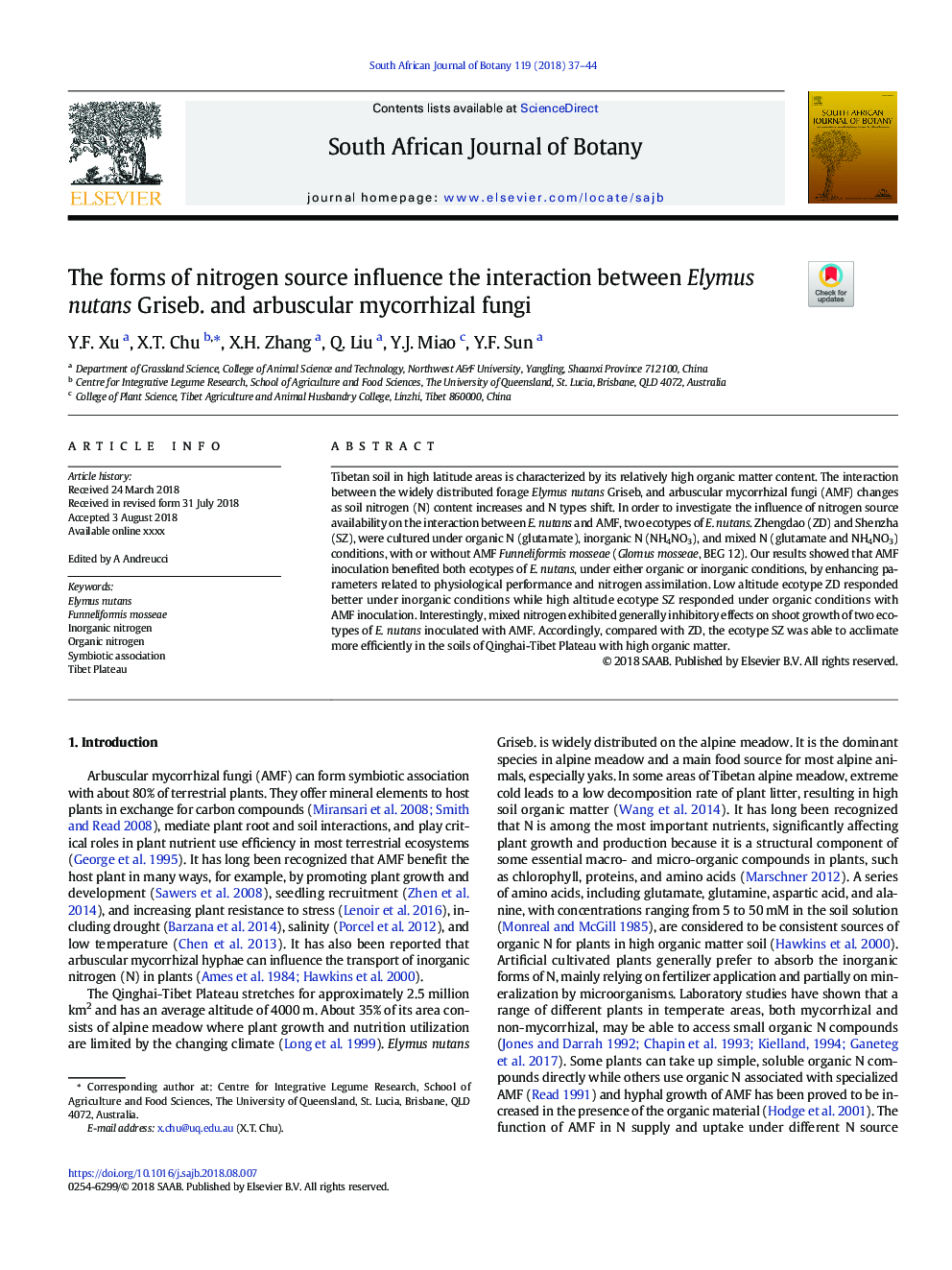| Article ID | Journal | Published Year | Pages | File Type |
|---|---|---|---|---|
| 8946202 | South African Journal of Botany | 2018 | 8 Pages |
Abstract
Tibetan soil in high latitude areas is characterized by its relatively high organic matter content. The interaction between the widely distributed forage Elymus nutans Griseb, and arbuscular mycorrhizal fungi (AMF) changes as soil nitrogen (N) content increases and N types shift. In order to investigate the influence of nitrogen source availability on the interaction between E. nutans and AMF, two ecotypes of E. nutans. Zhengdao (ZD) and Shenzha (SZ), were cultured under organic N (glutamate), inorganic N (NH4NO3), and mixed N (glutamate and NH4NO3) conditions, with or without AMF Funneliformis mosseae (Glomus mosseae, BEG 12). Our results showed that AMF inoculation benefited both ecotypes of E. nutans, under either organic or inorganic conditions, by enhancing parameters related to physiological performance and nitrogen assimilation. Low altitude ecotype ZD responded better under inorganic conditions while high altitude ecotype SZ responded under organic conditions with AMF inoculation. Interestingly, mixed nitrogen exhibited generally inhibitory effects on shoot growth of two ecotypes of E. nutans inoculated with AMF. Accordingly, compared with ZD, the ecotype SZ was able to acclimate more efficiently in the soils of Qinghai-Tibet Plateau with high organic matter.
Related Topics
Life Sciences
Agricultural and Biological Sciences
Agronomy and Crop Science
Authors
Y.F. Xu, X.T. Chu, X.H. Zhang, Q. Liu, Y.J. Miao, Y.F. Sun,
